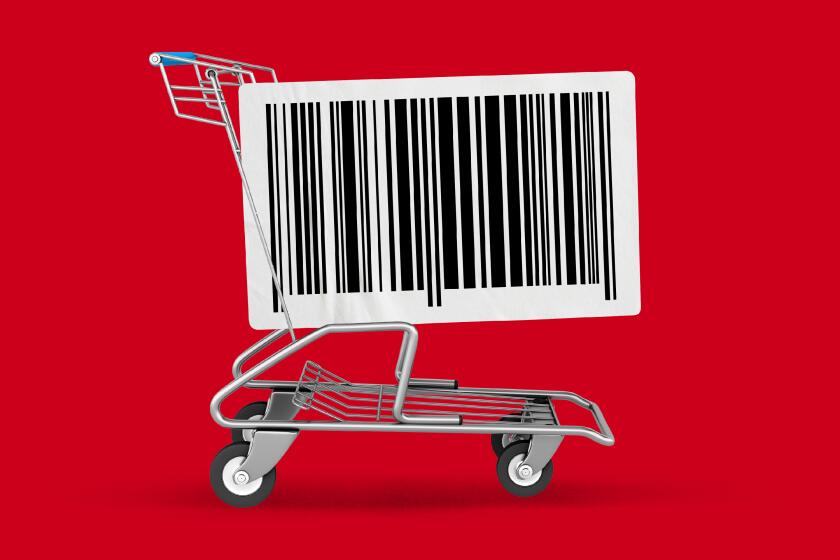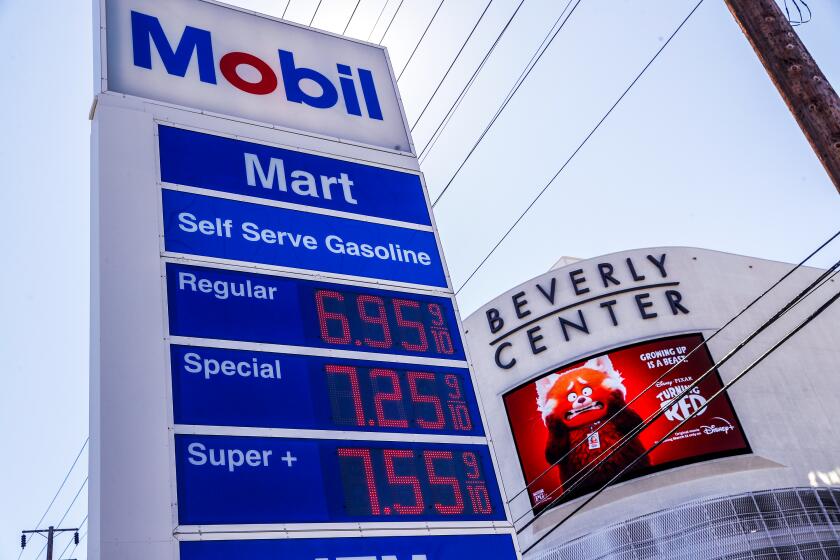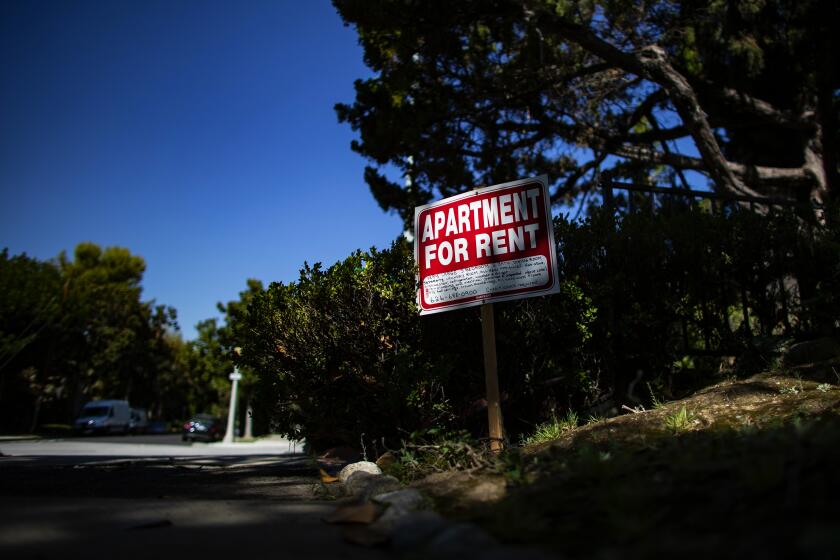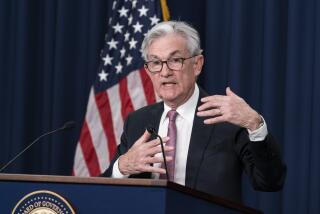Why is inflation so high, and when will it ease?
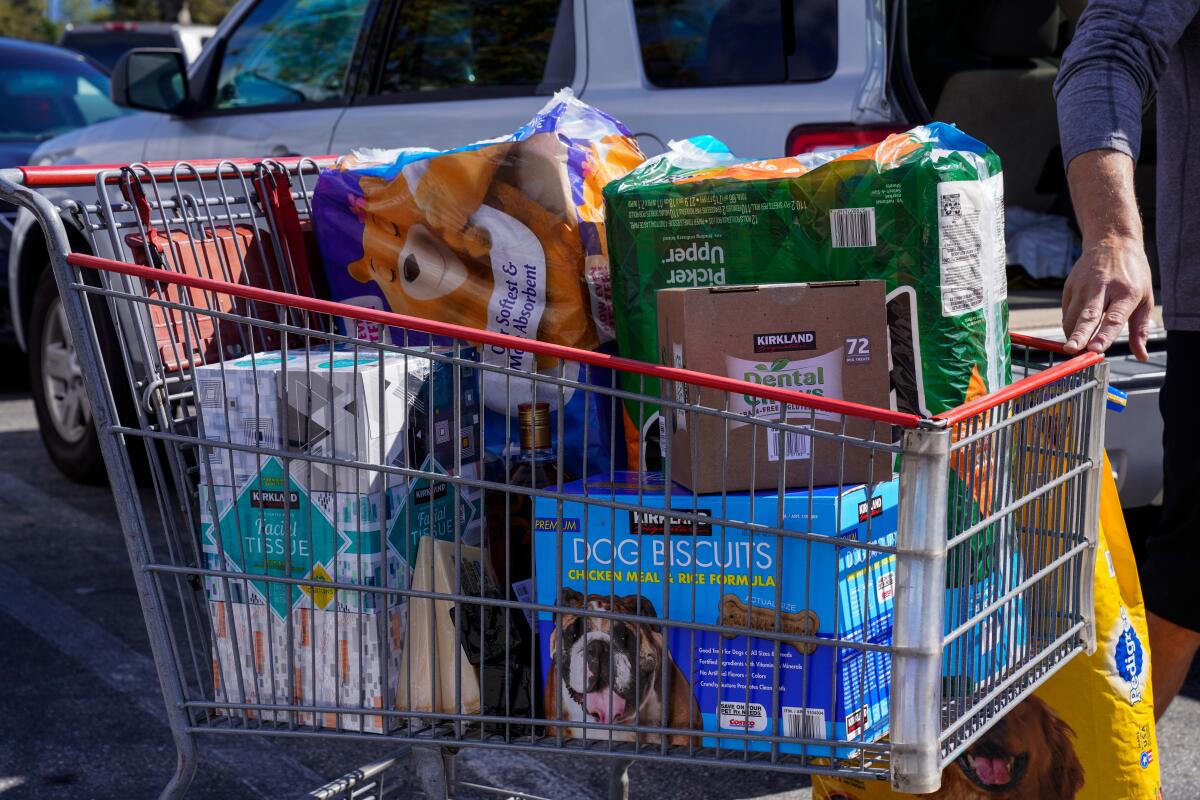
Inflation’s relentless surge didn’t merely persist last month. It accelerated.
For the 12 months that ended in June, the government’s consumer price index rocketed 9.1%, the fastest year-over-year jump since 1981.
And that was nothing next to what energy prices did: Fueled by heavy demand and Russia’s invasion of Ukraine, energy costs shot up nearly 42% in the last 12 months, the largest such jump since 1980.
Even if you toss out food and energy prices — which are notoriously volatile and have driven much of the price surge — so-called core inflation soared 5.9% over the last year.
Consumers have endured the pain in everyday routines. Gasoline is up 61% in the last year. Men’s suits, jackets and coats, 25%; airline tickets, 34%; eggs, 33%; and breakfast sausage, 14%.
Inflation hasn’t been this high in decades. We compiled a snapshot of prices at ten grocery chains in the L.A. area. How does your local store stack up?
Under Chair Jerome H. Powell, the Federal Reserve never expected inflation this severe or persistent. Yet after having been merely an afterthought for decades, high inflation reasserted itself with ferocious speed as shortages of labor and supplies ran up against a propulsive rise in demand for goods and services across the economy.
In February 2021, the consumer price index was running just 1.7% above its level a year earlier. From there, it accelerated — past 2% in March, past 4% in April and 5% in May. By December, consumer prices hit the 7% year-over-year barrier. And on and on it went: 7.5% in January, 7.9% in February. And the increases have topped 8% every month since March.
The U.S. has endured worse inflation but not in many decades. Post-World War II inflation peaked at nearly 20% in 1947, a result of the lifting of wartime price curbs, supply shortages and pent-up consumer demand. The inflation of the 1970s and early 1980s peaked at 14.8% in March 1980 before the Fed exorcized high prices with aggressive rate increases that caused brutal, back-to-back recessions in 1980 and 1981-82.
For months, Powell and some others characterized high inflation as merely a “transitory” phenomenon while the economy rebounded from the pandemic recession faster than anyone had expected. No longer. Now, most economists expect inflation to remain painfully elevated well after this year, with demand outstripping supplies in numerous areas of the economy.
So the Fed has radically changed course by imposing a succession of large rate increases. The central bank is making a high-risk bet that it can slow the economy enough to rein in inflation without weakening it so much as to trigger a recession.
The overall economy looks healthy for now, with a robust job market and extremely low unemployment. But many economists warn that the Fed’s steady credit tightening will probably cause a downturn.
What’s caused the surge in inflation?
Good news — mostly. When the pandemic paralyzed the economy in the spring of 2020 and lockdowns kicked in, businesses closed or cut hours and consumers stayed home as a health precaution, employers slashed a breathtaking 22 million jobs. Economic output plunged at a record-shattering 31% annual rate in 2020’s April-to-June quarter.
Everyone braced for more misery. Companies cut investment and postponed restocking. A severe recession ensued.
But instead of sinking into a prolonged downturn, the economy staged an unexpectedly rousing recovery, fueled by vast infusions of government aid and emergency intervention by the Fed, which slashed rates, among other things. By spring of last year, the rollout of vaccines had emboldened consumers to return to restaurants, bars, shops, airports and entertainment venues.
You’ve seen the signs advertising $6.95, $6.99 or even $7.05 for a gallon of regular unleaded. But who’s buying it, and why?
Suddenly, businesses had to scramble to meet demand. They couldn’t hire fast enough to fill job openings or buy enough supplies to meet customer orders. As business roared back, ports and freight yards couldn’t handle the traffic. Global supply chains seized up.
With demand up and supplies down, costs jumped. And companies found that they could pass along those higher costs in the form of higher prices to consumers, many of whom had managed to pile up savings during the pandemic.
Critics blamed, in part, President Biden’s $1.9-trillion coronavirus relief package, with its $1,400 checks to most households, for overheating an economy that was already sizzling on its own. Many others assigned greater blame to supply shortages. And some argued that the Fed kept rates near zero far too long, lending fuel to runaway spending and inflated prices in stocks, homes and other assets.
Is high inflation affecting just the U.S.?
Not by a long shot. Prices are rising just about everywhere in the world, in part a consequence of Russia’s invasion of Ukraine, which has elevated energy and food prices, and in part because of the supply chain bottlenecks that have driven U.S. prices up.
Eurostat, the statistical service of the European Union, says it expects year-over-year inflation to have hit 8.6% last month in the 19 countries that share the euro currency, up from an annual increase of 8.1% in May.
The International Monetary Fund has forecast that consumer prices in the world’s advanced economies will jump 5.7% this year, the most since 1984. The IMF foresees 8.7% inflation in poorer emerging markets and developing countries, the highest such rate since 2008.
How long will it last?
No one knows for sure. Elevated consumer price inflation could endure as long as companies struggle to keep up with consumers’ demand for goods and services. A recovering job market — employers added a record 6.7 million jobs last year and a healthy average of 457,000 a month so far this year — means that many Americans can afford to keep spending.
The Fed foresees inflation staying above its 2% annual target into 2024. But relief from higher prices might be coming. Oil prices have been tumbling on fears of an economic downturn. Jammed-up supply chains are showing some signs of improvement, at least in industries including transportation. Commodity prices have begun to fall. Pay increases have slowed. And surveys show that Americans’ expectations for inflation over the long run have eased — a trend that often points to more moderate price increases over time.
Data collected by the U.S. Bureau of Labor Statistics -- but not made available to the public -- show a gulf between the market conditions affecting new versus renewing renters.
What’s more, the Fed’s pivot toward an aggressively anti-inflationary policy could reduce consumer demand. Inflation itself is eroding purchasing power and might force some consumers to shave spending.
At the same time, new COVID variants could cloud the outlook — either by causing outbreaks that force factories and ports to close and further disrupt supply chains or by keeping more people home and reducing demand for goods.
How are higher prices affecting consumers?
The strong job market is boosting workers’ pay, though not enough to offset higher prices. The Labor Department says that after accounting for higher consumer prices, hourly earnings for private-sector employees fell 3.6% last month from a year earlier, the 15th straight drop.
There are exceptions: After-inflation wages rose more than 4% for hotel workers and 3% for those working in bars.
More to Read
Inside the business of entertainment
The Wide Shot brings you news, analysis and insights on everything from streaming wars to production — and what it all means for the future.
You may occasionally receive promotional content from the Los Angeles Times.
